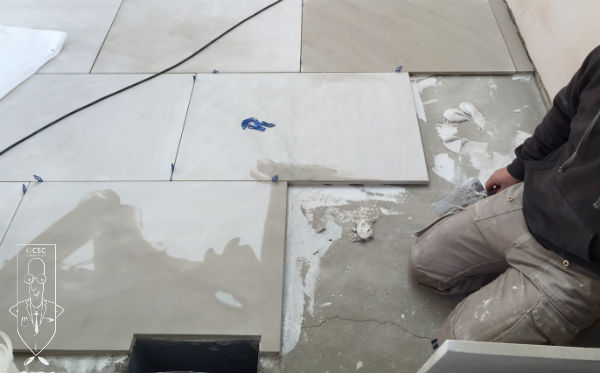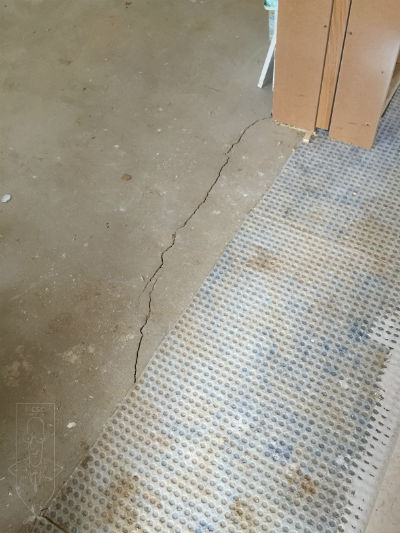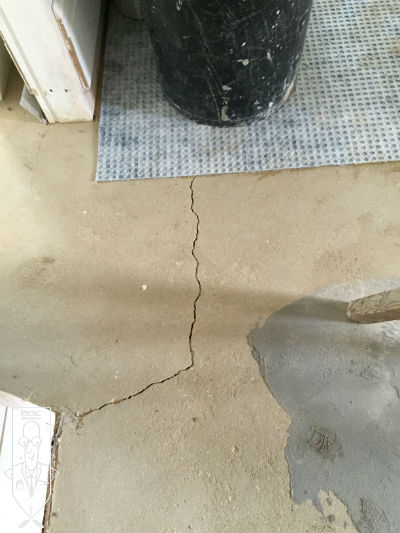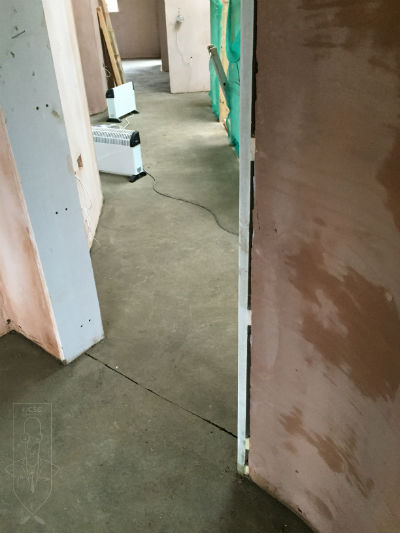Do you need to lay or are you worried about large format tiles placed directly over cracked screeds? Have you heard about crack inducement joints? Read on.

As you can see large format tiles are being placed over cracks
Not dealing correctly with cracked screeds is one of the main causes of tile floor failure. Keep reading to find out how to prevent, address, and solve cracks in screeds the right way
“I’ve just renovated my home, including replacing floors and installing UFH. The contractor applied a layer of traditional cement-sand screed to a depth of 65mm and told me to wait 110 days for the screed to dry before calling the tiler. However, a few superficial cracks developed across the screed surface. Unconvinced that repairs were necessary, the tiler installed large format tiles over the cracked screed directly. After I used the UFH system a couple of times, my new tile floor cracked in a few areas and several tiles came out. Now, my floor is completely ruined. Is there anything I can do to fix it?“
Unfortunately, this has become a common occurrence in floor remodelling projects. One reason for this is that all newly installed screeds can potentially shrink and crack as they dry, even when ideal ambient conditions (20°C and 50% Relative Humidity) are provided. Cracks form especially because the excess water evaporates from the surface at a faster pace than it is replaced by the residual water trapped in the concrete slab or at stress points such as doorways and corners. When UFH is used, water evaporates at a more rapid pace, increasing the risk of cracking. When tiles are applied directly to a cracked screed, crack-induced tension transmits through the screed to the brittle tiles, causing them to crack and/or debond.

A crack in the screed exactly where you would expect it to occur

Again, the screed cracks at a stress point, typically in a door way
There are four main ways to prevent cracks from forming in screeds:
- choose the right type of screed; though traditional screed can be used in conjunction with UFH successfully, the most suitable screeds systems for UFH can be anhydrite or modified proprietary screeds;
- use crack inducement joints;
- dry and cure the screeds in the right way;
- commission the UFH system correctly before the installation of the final floor finish.
If cracks still develop, implementing adequate remedial actions is imperative to prevent the aforementioned unwanted consequences. An efficient way to repair cracks in screeds is to use epoxy resin injection. However, expert advice should be sought before opting for this repair method.
An example of a well placed crack inducement joint.

A crack inducement joint on a new build

WHY SCREED TESTING CAN SAVE YOUR PROJECT TIME AND MONEY?
Download your free Practical Guide to Screed Testing here.





